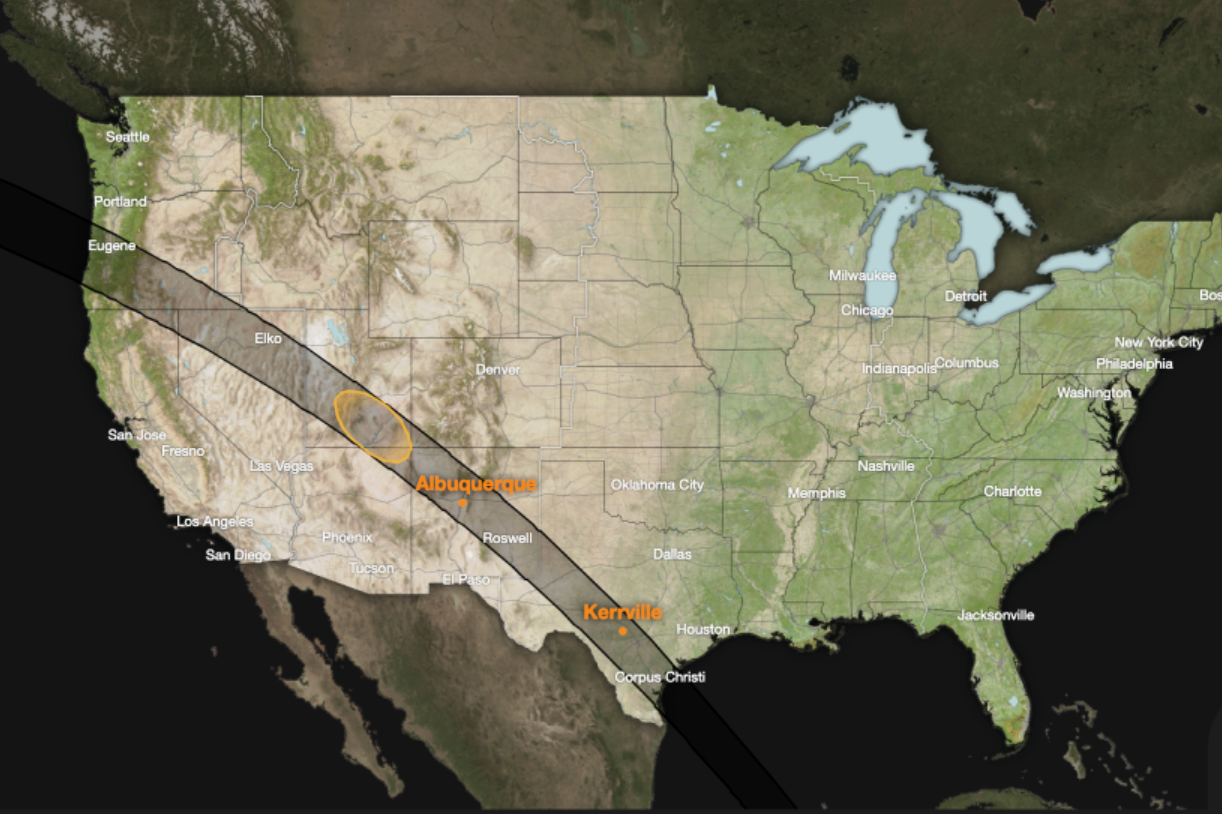‘Ring of fire’ solar eclipse on Saturday will be last until 2046. Here’s how to see it
2023 annular solar eclipse will be visible in North and South America
Your support helps us to tell the story
From reproductive rights to climate change to Big Tech, The Independent is on the ground when the story is developing. Whether it's investigating the financials of Elon Musk's pro-Trump PAC or producing our latest documentary, 'The A Word', which shines a light on the American women fighting for reproductive rights, we know how important it is to parse out the facts from the messaging.
At such a critical moment in US history, we need reporters on the ground. Your donation allows us to keep sending journalists to speak to both sides of the story.
The Independent is trusted by Americans across the entire political spectrum. And unlike many other quality news outlets, we choose not to lock Americans out of our reporting and analysis with paywalls. We believe quality journalism should be available to everyone, paid for by those who can afford it.
Your support makes all the difference.A rare annular solar eclipse will pass over North, Central and South America this month, offering skygazers the last chance to view one for more than 20 years.
On 14 October, the Moon will pass in front of the Sun while at its furthest point from Earth, meaning it will not completely cover our star. This will create an effect that astronomers have dubbed a “ring of fire”.
The 2023 celestial event will be visible across eight US states, passing from Oregon in the north west to Texas in the south east, starting at 9.13am PT and ending at 12.03pm CT.
After passing over the Gulf of Mexico, the eclipse will then cross Mexico, Belize, Honduras, Panama, Colombia and Brazil.
People on the ground will first see a partial eclipse as the Moon moves in front of the Sun. After about an hour and 20 minutes, the annularity will occur, lasting between one and five minutes.
Nasa has created an interactive map to track the annular solar eclipse’s progress, which will allow followers to see where the eclipse is to the nearest second.
The US space agency advises anyone viewing the annular solar eclipse to wear specialised eye protection designed for looking at the Sun, as the Moon will not completely block out the light.

“During the eclipse, the sky will grow dimmer, though not as dark as during a total solar eclipse. Some animals may begin to behave as if it is dusk and the air may feel cooler,” Nasa notes on its website.
“Do not look at the Sun through a camera lens, telescope, binoculars, or any other optical device while wearing eclipse glasses or using a handheld solar viewer – the concentrated solar rays will burn through the filter and cause serious eye injury.”
People in neighbouring countries and states will be able to see a partial solar eclipse, though they will not experience the “ring of fire” effect.
The next annular solar eclipse crossing the US will take place in 2046, according to Nasa’s eclipse program manager Kelly Korreck, however a total solar eclipse will be visible from North America on 8 April, 2024.


Join our commenting forum
Join thought-provoking conversations, follow other Independent readers and see their replies
Comments